Not sure whether your leopard gecko is male or female? Thankfully, determining the sex of one of the adorable little lizards is fairly easy and straightforward once they reach a certain age and size. Like many reptiles, leopard geckos are sexually dimorphic, meaning male vs. female geckos have several key physical differences.
Keep reading if you want to accurately determine your gecko’s sex. Whether you want to know for breeding purposes or you’re simply curious, it helps to know their sex, as male and female geckos have slightly different care requirements. I’ll cover when you can reliably tell if your leo is male or female as well as what physical indicators to look for on their body.
When Can You Accurately Determine the Sex of a Leopard Gecko?
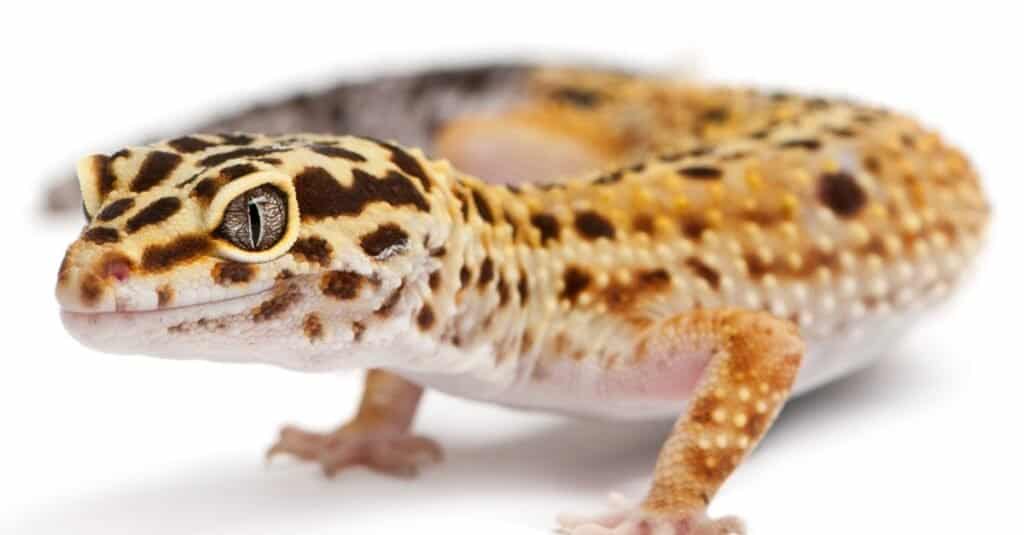
It’s best to wait until your gecko is at least 6 months old to accurately determine their sex
©iStock.com/GlobalP
Interestingly, you may be able to simply ask your breeder about the incubation temperature of your gecko’s egg! Studies have shown that incubation temperature determines a leopard gecko’s sex. If a clutch of eggs is incubated at 80 to 82F, it will be mostly females. If the clutch is incubated at 88 to 90F, it will be mostly males. But if the eggs are kept at 83 to 87F, the eggs will be almost a 50/50 mixture of males and females.
However, if you didn’t get your gecko from a breeder, they don’t have this information on hand, or you aren’t able to get in touch with them, you’ll have to resort to other methods to tell if your scaly pal is male or female.
As I touched on earlier, female and male geckos have several key physical differences. These differences start to appear when they reach their juvenile stage of growth (or at around 4 to 6 months of age). There’s a lot of debate as to when you can accurately sex a leopard gecko, but most experienced breeders and reptile experts agree that after the gecko is roughly 6 months old, you can reliably determine its sex.
How Do You Determine the Sex of a Leopard Gecko?
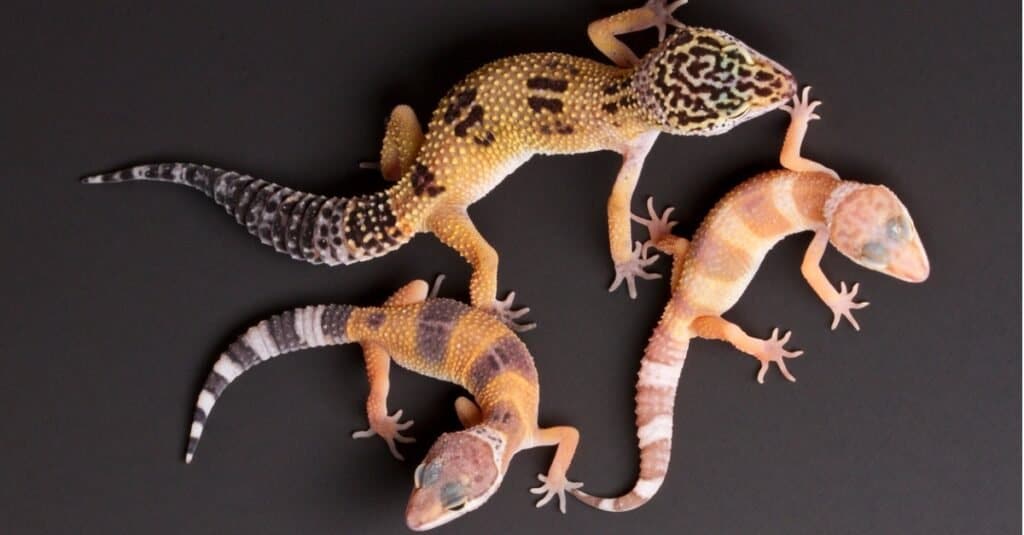
Leopard geckos of different ages, sizes, and morphs
©iStock.com/David Kenny
There are three main indicators that can tell you whether a leopard gecko is male or female. However, these features don’t become obvious until they are around 6 months old. More specifically, the features are femoral pores, pre-anal pores, and hemipenal bulges.
Pre-anal pores and hemipenal bulges are only present on male geckos. Femoral pores can be present on both males and females, but males typically have far larger, darker, and more pronounced pores. Some female geckos have very small femoral pores, while others lack them completely.
Let’s move on to what exactly these features look like and where to look for them when determining your gecko’s sex.
Method 1: Determine the Presence of Pre-Anal Pores
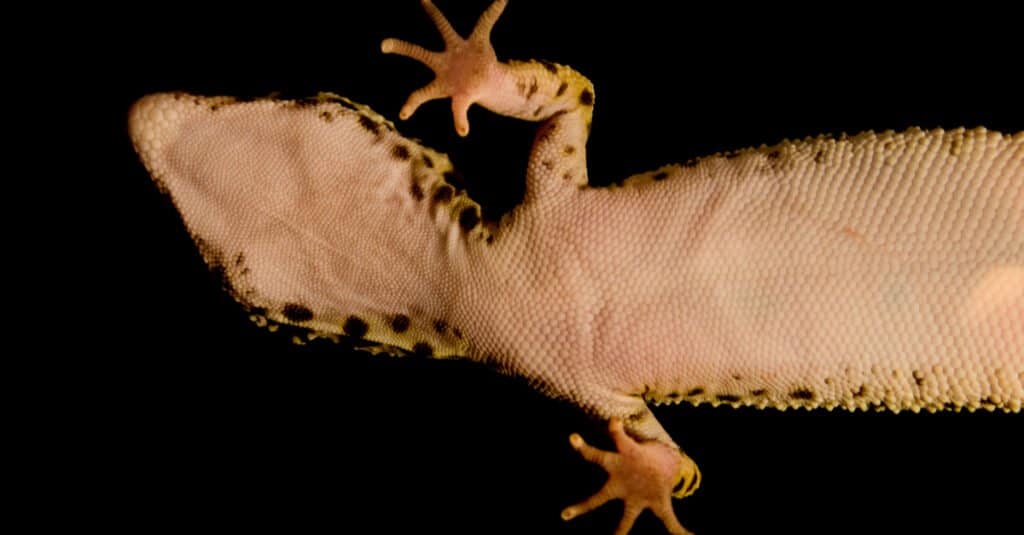
You’ll need to get a good look at your gecko’s underside to accurately determine their sex.
©Radim Glajc/Shutterstock.com
Checking if your gecko has pre-anal pores is the most accurate way to determine if they are male or female. Pre-anal pores are a small, V-shaped line of pores just above a male gecko’s vent between their legs. While males have very pronounced pores that look like large black or brown dots, females lack them entirely.
Male leopard geckos use these pores to secrete pheromones. They use these pheromones to attract potential female mates and identify themselves to other geckos nearby.
If your gecko is a bit too skittish to allow you to get a good look at their underside, try placing them in a clear plastic or glass container and holding it up above your head. Do not squeeze or hold the lizard on their back for an extended period of time.
Method 2: Determine the Presence of Hemipenal Bulges
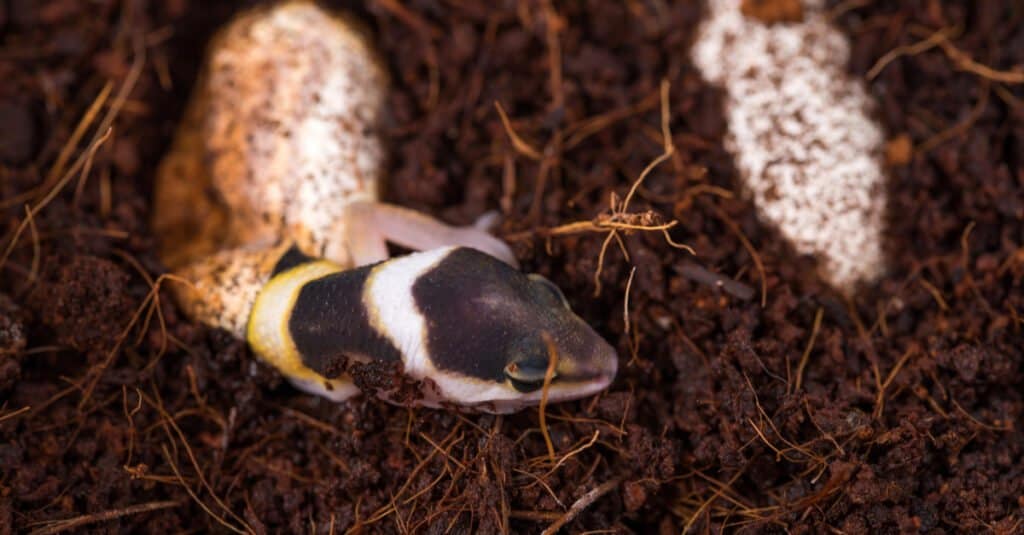
Leopard geckos’ sexes are determined by the temperature at which their eggs were incubated.
©Spok83/Shutterstock.com
Another highly accurate yet slightly less obvious way to tell if your gecko is male vs. female is to determine if they have hemipenal bulges. These bulges are only present on males. The gecko’s hemipenes are stored in the bulges until they need to mate, in which case they’ll pop out temporarily.
Hemipenal bulges are two small mounds present on the underside of your gecko just beneath their vent. Male geckos have distinct bulges, while females’ vents are smooth. You can use the same methods mentioned above here. Either hold the gecko above your head or place them in a clear-bottomed container, and examine the area just under their vent.
Method 3: Examine Femoral Pores
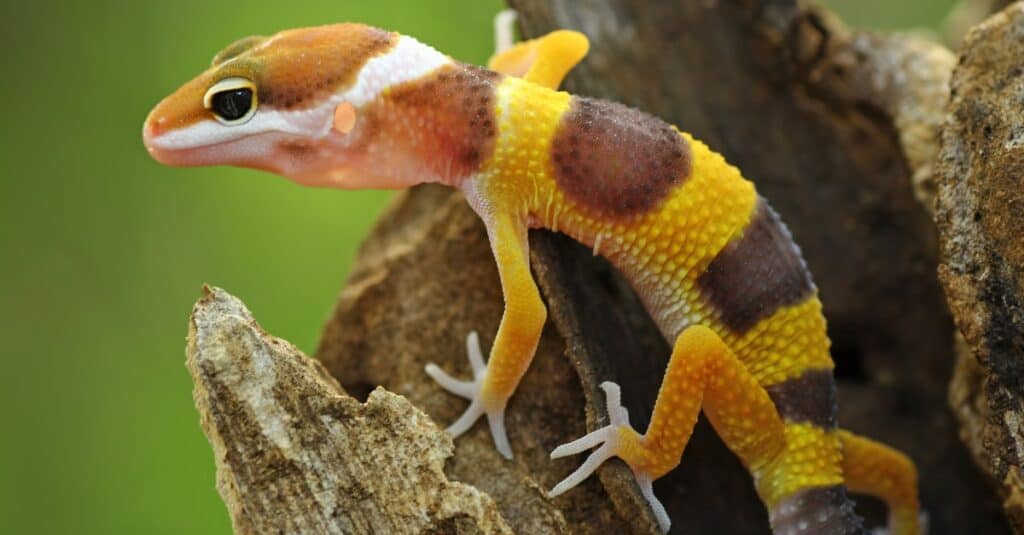
This baby leopard gecko is still too small to be accurately sexed.
©iStock.com/agus fitriyanto
The third feature you can look for when determining your gecko’s sex is their femoral pores. Male geckos also use these pores to secrete pheromones, though both males and females can have them. However, femoral pores on females are very small (if they are present at all), while males’ femoral pores are very large, distinct, and more prone to getting clogged.
Femoral pores are located on the underside of a leopard gecko’s back legs. These are usually small lines of brown or tan dots, one of each running horizontally across each of the gecko’s thighs. If your gecko has very large, dark, and obvious femoral pores, they are likely male. On the other hand, if they have barely visible pores or no pores at all, they are likely female.
This method isn’t quite as accurate or easy to determine as the two mentioned above. However, it can still help to confirm your gecko’s sex once you’ve looked for their pre-anal pores and hemipenal bulges.
Other Physical Differences in Male vs. Female Leopard Geckos

Male leopard geckos are typically slightly larger and bulkier than females.
©cellistka/Shutterstock.com
Male and female leopard geckos have a few other physical differences, though these vary wildly depending on an individual’s genetics/morph, age, and size. I don’t recommend looking to these features alone to determine your gecko’s sex, but they can serve as an extra confirmation if you’ve already used the methods explained earlier.
Female geckos in general tend to be smaller, leaner, and longer. Their tails are usually slightly less bulky than those of male geckos. In addition, their heads are also thinner and longer.
Alternatively, male geckos are larger, bulkier, and a bit shorter in length. Their heads are also more broad and short. Male geckos weigh slightly more than females on average.
Finally, females lay eggs, while males do not. Interestingly, female geckos can and will occasionally lay (infertile) eggs even without ever being in contact with a male. If your gecko has laid a clutch recently, they are definitely female!
The photo featured at the top of this post is © cellistka/Shutterstock.com
Thank you for reading! Have some feedback for us? Contact the AZ Animals editorial team.






